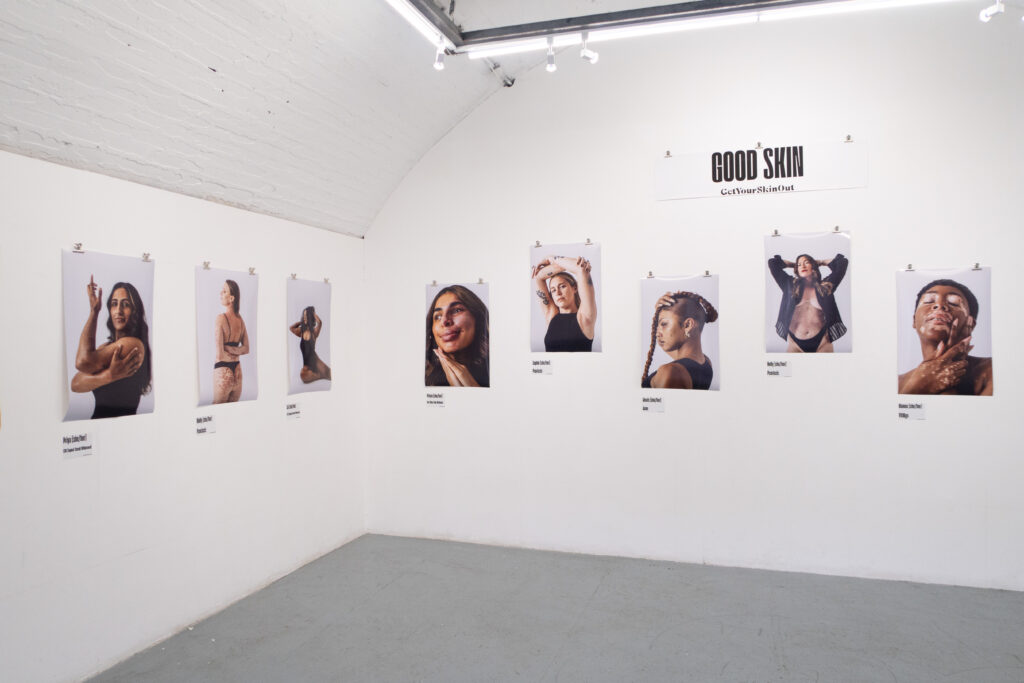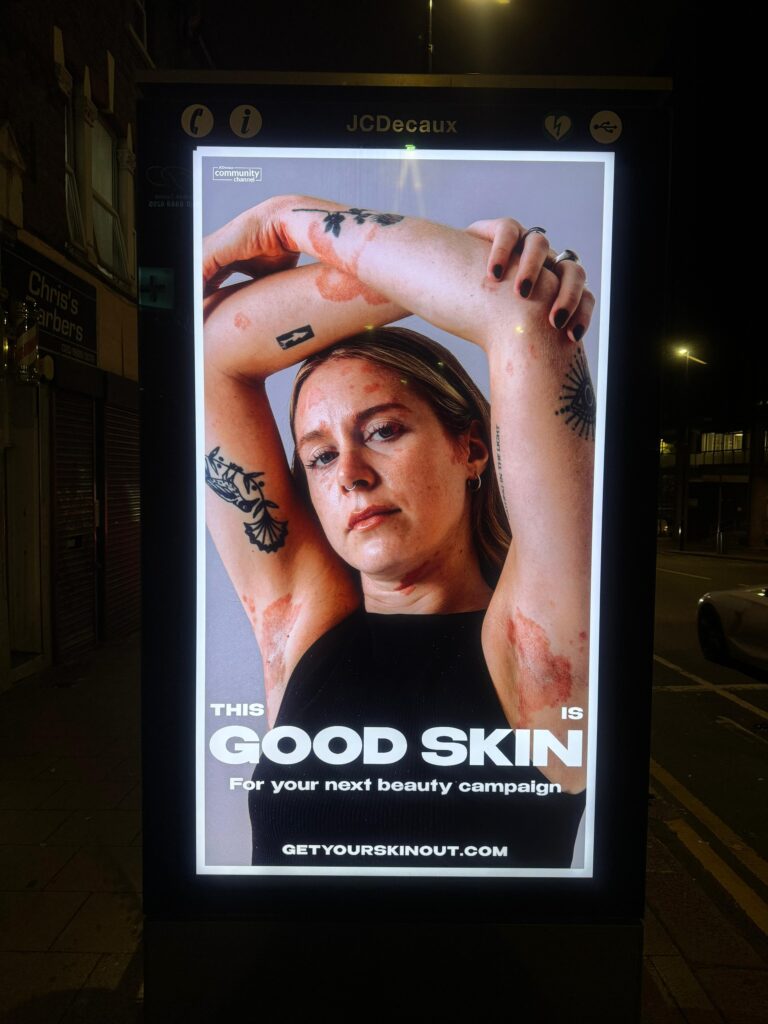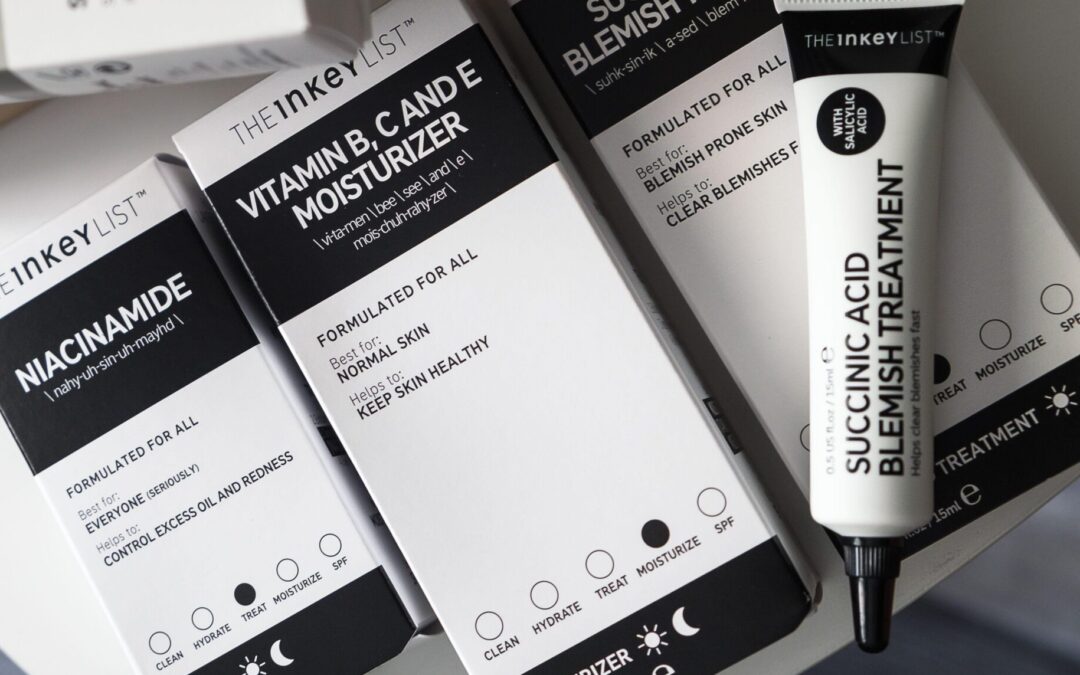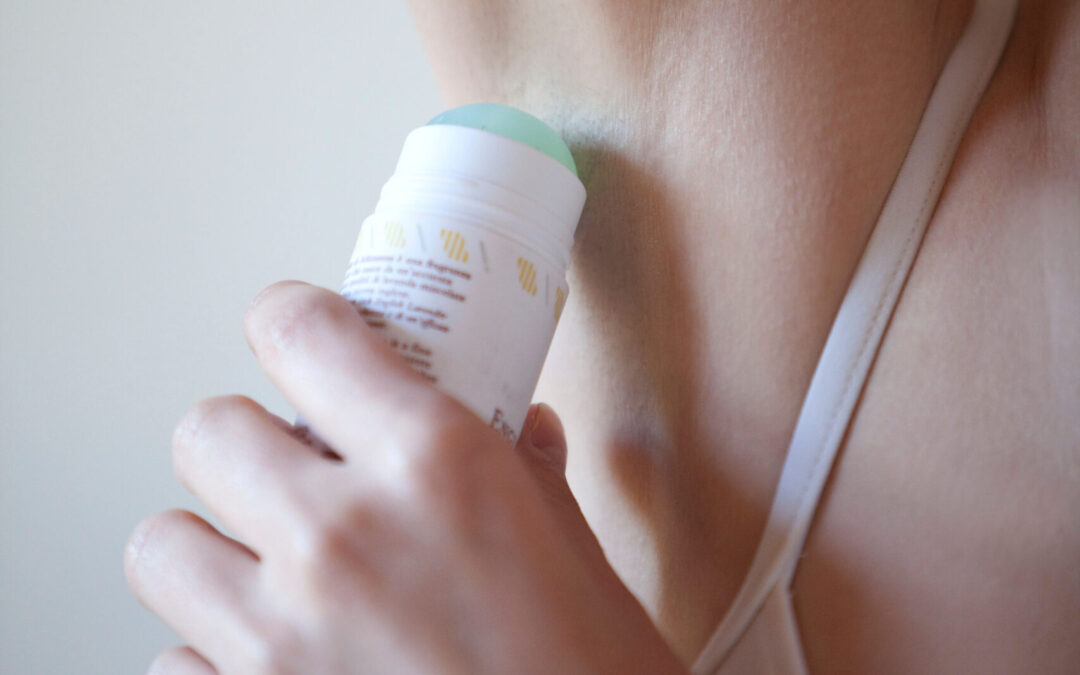I have a question – have you ever seen a billboard that didn’t include a conventionally ‘picture perfect’ model with clear glass skin? Chances are, probably not. But through Holly Dillon’s #GetYourSkinOut campaign, people are helping shift the spotlight of body norms. Radiance spoke to Sophie Doyle, who modelled for the campaign.
Artist Sophie, 32, has dealt with psoriasis ever since she was 16, but has found community in sharing her skin online through her account @sophies_skin on Instagram.
Through her account, she reached Holly Dillon, founder of the #GetYourSkinOut campaign, who aims to change the way our skin is viewed through diverse partnerships with brands. Their tagline is ‘NO FILTERS, NO FIXES – JUST SKIN, CELEBRATED’.
In August 2024, Holly rented a gallery in Peckham, inviting people with visible differences to share their stories in a showcase as part of the campaign.
The result? An empowering collaboration of skin celebration.
“It was such an amazing experience. Especially when we went to the art exhibition. I’ve never been in a room with so many people with visible differences, and I think that’s such an incredible feeling. Everyone’s so friendly and welcoming, and will talk about their skin condition. I think it is quite an isolating condition. However, when you do meet other people, even online, you feel like you’re less alone. I’ve been to a couple of kind of other skin community meetings, such as one called ‘Itch and B*tch.'”

The campaign helped to create a positive community from such an isolating condition, says Sophie.
“I’m just very proud to represent people with skin conditions. But it’s not just a skin condition, it has such a toll on your mental health, and no one really can understand unless you have something similar, it’s very hard to relate to and I think it’s really nice to be in a room with people who have that as well.”
The campaign was also published on billboards nationwide as part of psoriasis awareness month in October, with screens showing Sophie’s face around the country.

“When it was all happening, I was moving house and I ended up seeing it in the van and I was like, “my god, it’s there.” The boards she hired were absolutely massive. Just knowing that there are so many other people that are also going to be looking at that and researching about it, is really mad.”
When she was first diagnosed at 16 however, the medical information on psoriasis was limited and often confusing, but now she gets to help others in similar situations.
“I was at that age where I had no idea what I was doing. It’s really intense (at that age). No one around me knew what it was. I didn’t know what it was, and there was nothing online, so, I think now being able to put myself out there is really amazing, to be able to support people that are going through something similar. I’ve had people reach out to me and message me like, “Oh my god, I’ve suddenly got it. How are you coping? what are you doing?” I think I lacked that a lot, I didn’t really see any representation of skin conditions when I first got it.”
Read more on visual differences: Leaving Our Mark: normalising the beauty in our differences – Radiance
For Sophie, the initial diagnosis wasn’t helped by doctors who lacked awareness around external triggers and symptoms.
“I first got it on my scalp and the back of my head. At the time, they (doctors) just said “You might have it. We don’t really know.” Then just gave me a lot of products to try. But again, no one knew about it, and when I first had it, I got a lot of really weird comments like ‘are you stubbing cigarettes out on your arm?’
They didn’t try and say, “what is your mental health like?” I just started taking birth control which I think was probably the trigger for me to get it. I think it was the mixture of birth control and stress at the time and they didn’t see it as anything else. Obviously now it’s a lot different and there’s so much more information out there and it’s not just a skin condition, it’s something so much more.”
For others with psoriasis, she shares one thing that can relieve her symptoms: sea water and sun.
Obviously, the dangers of sun exposure should always be remembered!
“I posted the other day about the psoriasis on my face which had gotten so much worse over this winter. I’d not really had that much on my face before, but it ended up being all of my forehead and underneath my eyes. That was a real struggle for me to accept and to feel comfortable in my own skin because I’ve never had it on my face before like that.”
“But for me, the salt water and the sun is amazing. A few people I’ve spoken to online before that have said: ‘I’m completely the opposite. my psoriasis will get worse in the summer and be fine in the winter’. But it’s so crazy how much for me it really helps.”
But the pain of psoriasis shouldn’t be taken lightly even if physical appearance may seem to be improving.
“At the moment for me, it’s (the pain) every day, I also get it where your skin splits, which is really painful and that’s in the sensitive areas, which can get really raw, it’s not nice.
One thing that people using treatments for psoriasis or conditions can also often experience is Topical Steroid Withdrawal (TSW).
“I was on steroid creams within a year of of me being diagnosed, up until maybe three years now. I’d got to a point where the steroids weren’t really working anymore, and they (doctors) were also like, “You shouldn’t be on steroids for this long.”
“It flared up really badly, I stopped using it. It was a fiery burning sensation for weeks, that didn’t go down. It was really painful. and obviously was really really red and really raised. I think it ended up being about a year for me to heal.”
For more advice on TSW, check out our Expert Advice section which provides more information.
A positive relief for Sophie comes from her art, which has been inspired by her psoriasis journey.

“I just thought: there are no representations of skin conditions in art, and I think it’s represented in a negative way. I think I wanted to take it (psoriasis) and make it into something very aesthetically beautiful and I use a lot of bright colours.”
Her message to young people also struggling focuses on finding community:
“I would encourage people to connect with others and talk to them about it. I think I’ve always been really open to people, messaging me and asking me questions over the years, and it makes it feel less lonely. I would also recommend educating yourself, there are loads of treatments for it. You don’t have to use steroids.”
For anyone who would like further advice on managing psoriasis, check out the NHS page for more.



